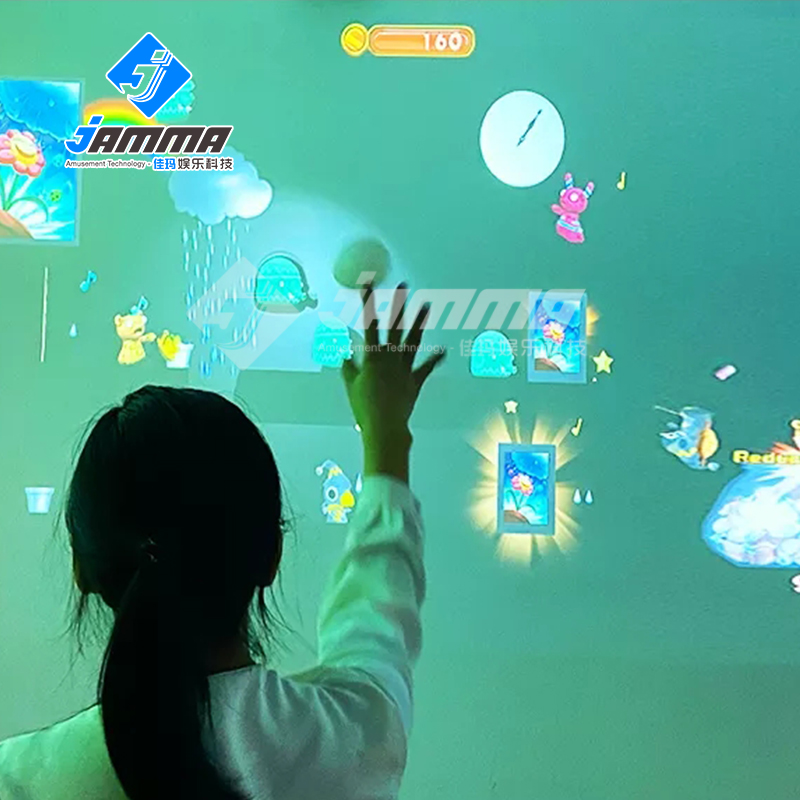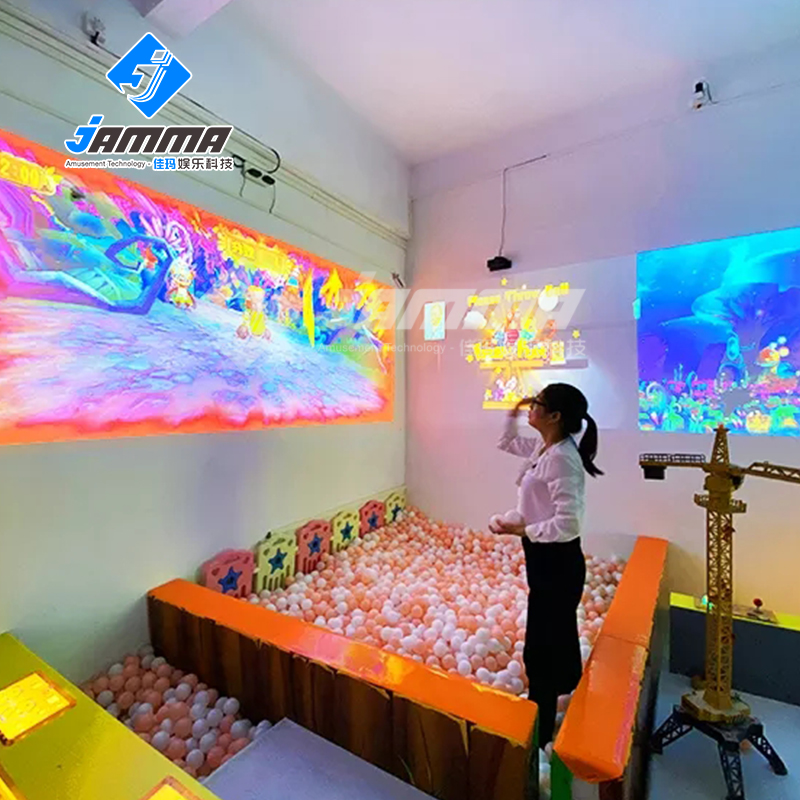Ground-based interactive projection system immersive experience

What is Interactive Ground Projection
Ground-based interactive projection is an interactive technology that is similar to wall-based interactive projection, but projects projected content onto the ground or a horizontal surface to enable users to interact with the image or content on the ground. This technology is typically implemented using projectors, sensors, and computer software.
Floor interactive projection system components
- Projector: The projector is one of the core components of a floor interactive projection system. It is used to project images, videos and content onto the floor. A high brightness projector is usually chosen to ensure that the projected content is clearly visible.
- Floor Projection Surfaces: Floor projection surfaces are the target of the projection and are usually floors or other flat surfaces. These surfaces usually need to be flat, clean, and able to provide good reflective properties to ensure the quality of the projected content.
- INTERACTIVE SENSORS: Interactive sensors are a key component of an interactive floor projection system. These sensors can be infrared, laser, photoelectric, or camera sensors used to detect a user’s touch, gesture, or other interactive behavior. The sensors capture user input so that the system can respond accordingly.
- Computer or Media Player: Computers or media players are responsible for processing and managing the projected content. They run interactive software that integrates user input with the projected content to enable interactivity.
- Interactive Software: Interactive software is a key component of the system that allows the user to interact with the projected content. This software typically includes interactive games, educational applications, presentation tools, and other customized applications that allow users to interact with the projected content on the floor.
- Projection Interaction Engine: The Projection Interaction Engine is a central control unit that coordinates communication and interactive effects between the projector, sensors, computer and interactive software. It handles user input, adjusts the projected content, and ensures smooth interactivity.
- Audio system: Some floor interactive projection systems may include an audio system to provide music, sound effects or voice guidance to enhance the interactive experience.
- Brackets and mounting equipment: Brackets and mounting equipment are often required to ensure that the projector is correctly positioned and projected onto the desired area. These brackets and equipment can be fixed to the ground or under the floor.
- Enclosures and Protectors: Because floor-mounted interactive projection systems are in public areas, enclosures and protectors are often required to prevent damage, dust and liquid intrusion.
How does interactive floor projection work?
Interactive floor projection combines high-brightness projectors, motion-sensing technology, and interactive software to create engaging and interactive experiences on a floor surface. The projector projects images or animations onto the floor, while sensors detect user movements and interactions. This technology is used in various applications such as education, entertainment, retail, and healthcare to enhance engagement and provide interactive experiences for users.






Recent Comments